Winner of the Grand Prize at TreeHacks2024, the largest university hackathon in the U.S.
Open source teleoperated robot system "ReazonChops" attracts motivated U.S. students
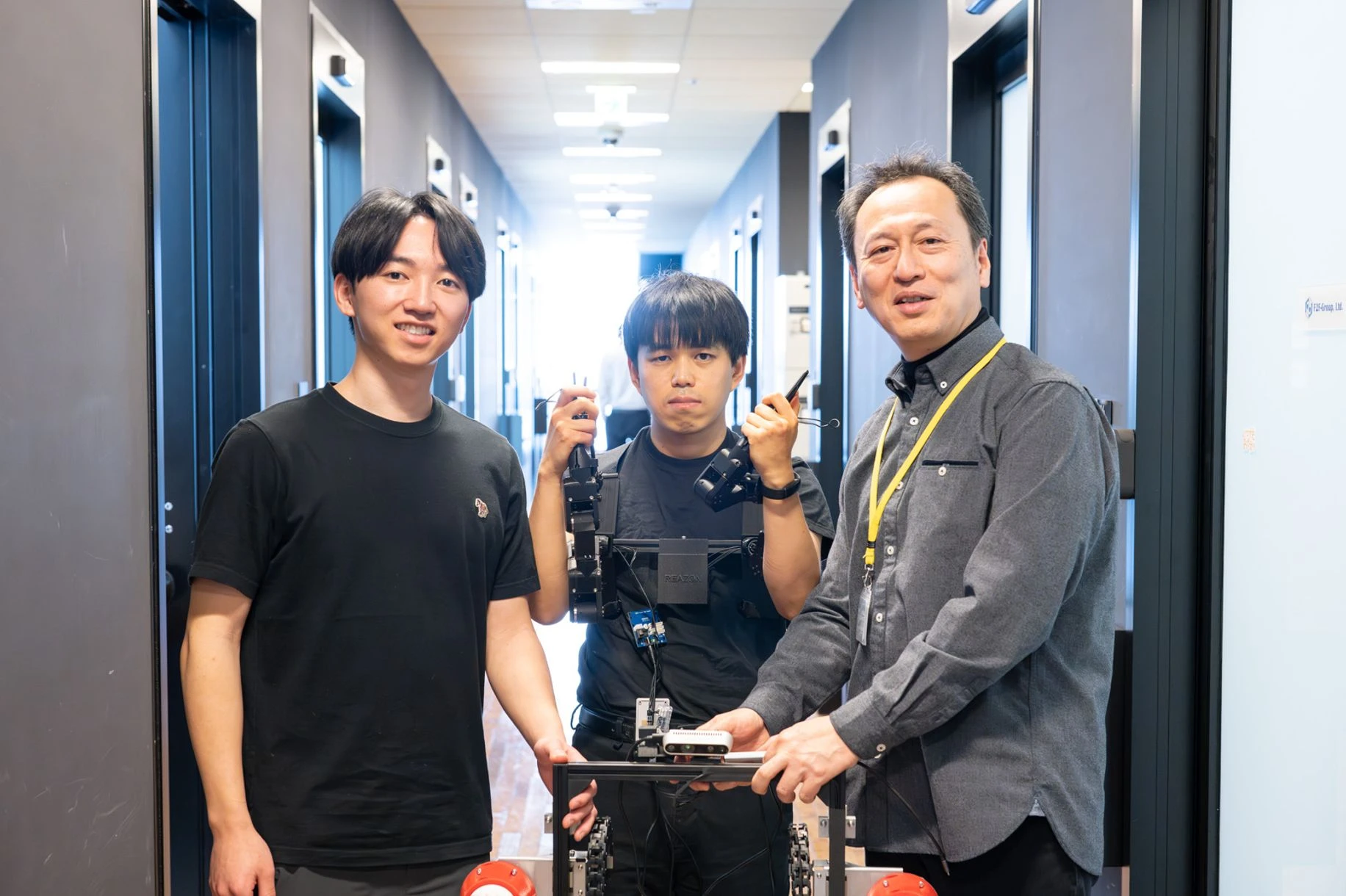
In February this year, the Reazon Human Interaction Laboratory sponsored TreeHacks, the largest university hackathon in the US, held at Stanford University. Approximately 350 teams competed (~4 members per team) for a variety of prizes offered by sponsors the likes of Intel, YCombinator, Pinterest, and many other well-known Silicon Valley tech companies. The Reazon Human Interaction Laboratory stood out as one of the few foreign startups sponsoring this year’s event. “Team Baymax,” the 2024 Grand Prize Winners, utilized ReazonChops, an open source teleoperated robotic system developed by the Reazon Human Interaction Laboratory. We spoke with Daijiro Mori, director of the Reazon Human Interaction Laboratory, and Hiroto Yamamoto, who worked as a company representative at TreeHacks, about the purpose of the lab’s participation in TreeHacks 2024 and the results they achieved.
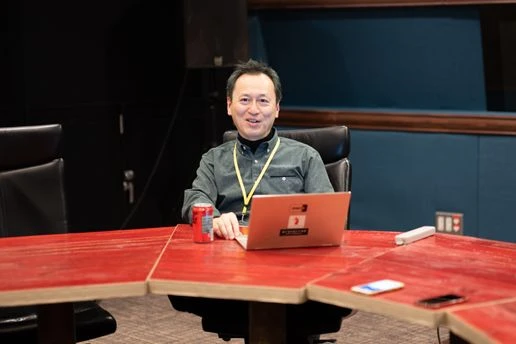
Daijiro Mori Director, Reazon Holdings, Inc.
Graduated from Kyushu Institute of Design, Department of Sound Design. Engaged in research and development of information retrieval technology at the Human Interface Laboratory of Nippon Telegraph and Telephone Corporation. Developed full-text search software at Mirai Search Brazil Ltd. Established the Human Interaction Laboratory at Reazon Holdings, Inc.

Hiroto Yamamoto Reazon Holdings, Inc.
Majored in Computer Science at Stanford University. Engaged in research and development of Brain-computer Interface technology with the Neurotechnology Lab at the National Institute of Advanced Industrial Science and Technology (AIST). Responsible for the development of AgeTech products at the Reazon Human Interaction Laboratory.
Spreading the word to the world’s best and brightest students.
.jpg?width=1832&height=1832&fit=inside&format=webp&quality=90)

Hosted by Stanford University, TreeHacks is a hackathon that attracts not only Stanford students but many other talented engineering students from over a dozen countries. Why did the Reazon Human Interaction Laboratory decide to sponsor TreeHacks this year?

The Human Interaction Lab is hosting a 10-week incubation program from June to August this summer, inviting participants from the United States and other countries outside of Japan. We decided to sponsor TreeHacks, the largest university hackathon in the US, so that we could not only promote our company at the event, but also to let students experiment with our products as part of the hackathon. It was also a great opportunity to introduce our lab to the world’s best and brightest engineering students, also spreading the word about our incubation program this summer.
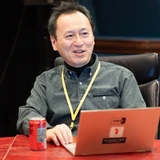
We felt that the best way to promote our presence and our lab’s vision would be to bring something interactive that students could hold and use. So, we decided to exhibit the "ReazonChops” robot arm, which had just been developed. Since we had less than a month to develop ReazonChops before TreeHacks began, all the researchers gave up their holidays to complete three robot arms to display.

It was like we had our own hackathon before the hackathon.
Reazon's booth attracted attention with its robot arm demonstration.


From what I understand, TreeHacks is a hackathon in which participating students form teams on the spot to work on a project of their own devising within 36 hours. How exactly does the event work?

Half of the participants are Stanford undergraduates, while the rest are students from other universities, including those abroad, who have passed an application screening process. There were about 1,100 participants in total this year, with about 350 teams competing to build projects for five project tracks: healthcare, sustainability, blockchain & security, education, and entertainment.
The event venue was filled with booths of company sponsors related to these tracks. The students spent the first few hours visiting the booths, thinking about what they wanted to build, forming their own teams, and getting to know the sponsor representatives. Some of the teams were originally formed by friends, but it was not uncommon for students to form teams on the day-of by talking and meeting each other at the sponsor booths.
Once the teams were formed, they created original projects using the products and services provided by the sponsor companies. In addition to the grand prize awards from the Stanford TreeHacks organization itself, each company offers a corporate award to the best team of their specific choosing.

You gave a demonstration of "ReazonChops" at your booth.

We brought lots of snacks and goodies from Japan and used the ReazonChops robot arms to put them into Reazon-branded tote bags and handed them out to the students. The booth was extremely popular, and all the goods and tote bags were gone by the end of the first day. We also displayed other goods such as anime merchandise that Reazon collaborates with through its other businesses, so many students were interested in the diverse areas that Reazon’s various businesses are all about.
Team Baymax displaying their project at the judging booths


One of the groups that used Reazon’s technology was “Team Baymax,” who won the TreeHacks Grand Prize.

That's right. Since we decided at very short notice to participate in TreeHacks, we were only able to prepare two robot arms for the demonstration and one spare, and we made it a policy not to hand out our arms for free use unless a team specifically asked us to do so. Then, a group of four Stanford students from Team Baymax asked, "Do you have a spare for this arm? If you can lend it to us, we would love to do a project like this.” There were several teams that asked, but Team Baymax presented a very strong vision for their use of the ReazonChops robot arm. They aimed to use the robotic arm to find and pick up medicine from a tabletop and place it in someone’s mouth. We thought this was a great idea to showcase the vision of ReazonChops.
There were four members at first, but throughout the 36 hours, they called in other people to work on a variety of development tasks, and eventually there were six in total working on the project. The result was not only winning Reazon’s sponsor prize, but the TreeHacks Grand Prize, which was $10,000 USD in cash.

Did they name the team"Baymax" after the movie "Big Hero 6"?

That's right. The name of the main character in "Baymax" is Hiro. My real name is Hiroto, but in the US people often call me “Hiro.” So they decided on "Baymax" because it's the same name, also with the theme of robotics in human-centered care.

The type of program Team Baymax developed worked automatically, correct? Without a human operator, that is to say.

Basically, ReazonChops is a robot arm system in which arm B reproduces the same movements made by a person with arm A at a distance. However, since Team Baymax could only borrow one arm, they programmed it to work autonomously. Despite providing no previous software framework for them to use, Team Baymax suddenly realized an autonomous control system in 36 hours.

Tell me more about this autonomous system.

For example, a person who has partially or totally lost control over parts of their body due to something such as an intractable disease can ask the robot, "take the pink-colored medicine over there and feed it to me.” The robot recognizes the person’s voice and interprets it into a language model to understand the request. The robot then uses its onboard camera to identify the correct medicine on the table, grabs it, brings it to the person's mouth, and drops it into their mouth. This is something that a human being could easily do, but it is extremely difficult to have a robot do all this decision-making on its own. The ReazonChops robotic arm has seven joints, and in order to automatically grab an object and carry it, we have to calculate the angles at which each of the joints must be bent. In technical terms, we call this “inverse kinematics,” and it is very difficult to solve mathematically. It is amazing that they were able to make an effective system in such a short amount of time.

As they were working, the Baymax team members gathered their desks right in front of the Reazon company booth, about 2 meters away, and used that as their base of operations. Whenever they had a question, they would immediately ask us, "How can I do this?” or “Can I modify and change that?” I was amazed at how quickly they understood the technology and their eagerness to innovate on top of what we provided.

Team Baymax and I had a video call in the middle of the night as they were building their system, and they asked a lot of questions. For instance, it was sometimes difficult to move the attached camera using the computer that they had, but when we proposed an alternative, they quickly understood the suggestion and implemented it smoothly. It was a pleasure to work with such talented young individuals.
Team Baymax takes home the TreeHacks Grand Prize
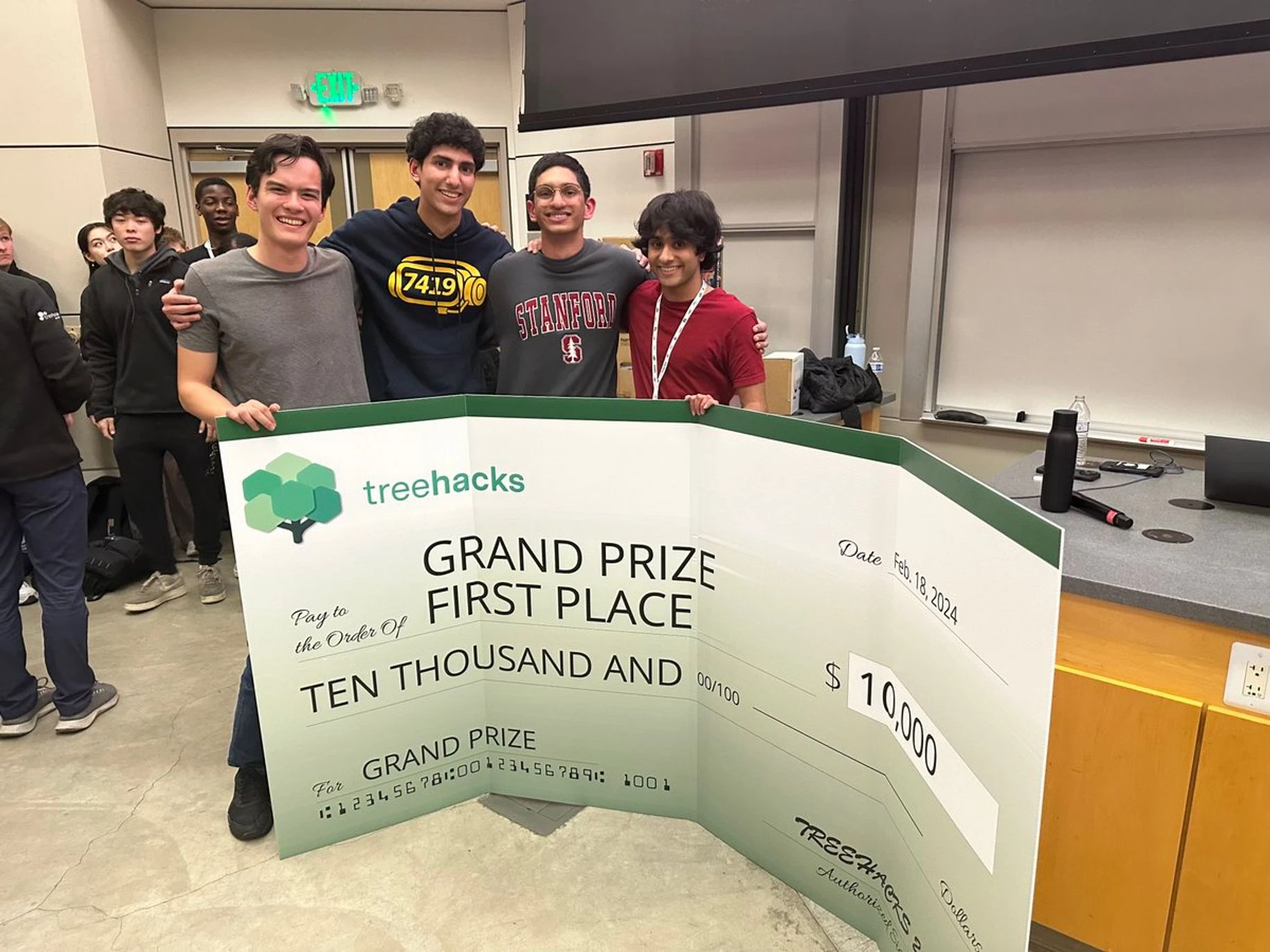

Baymax not only won the Reazon sponsor award, but also the Moonshot Grand Prize, the best overall award of TreeHacks 2024 ($10,000 USD).

For our technology to have helped Team Baymax stand out among the 350 teams competing was a great honor. It is thanks to their enthusiasm and innovative drive that this was possible, and we are grateful that they picked ReazonChops as their technology of choice.

For a hackathon team to win an award, that means they received the highest evaluation from the TreeHacks judge panel.

The team members were exactly the kind of people that the sponsor companies would want.

As a result of this opportunity, the members of Team Baymax have been invited to participate in a 10-week program that the Human Interaction Laboratory will be offering in the summer. We are looking at how we can further refine their TreeHacks project during the summer program.

So your original purpose for sponsoring TreeHacks 2024 has been fulfilled. Were there additional program applicants?

When we put out the call for applications, we received about 430 applicants. Since TreeHacks is primarily an undergraduate event, we expected to receive applications from only undergraduates, but about one-third of the applicants were master's students or above. This summer, we will be working with 10 people selected from this pool of 430 to conduct research and development together at the Human Interaction Laboratory’s new office location in Akihabara, Tokyo.

In April, we plan to take the ReazonChops robotic arms to a large poker tournament in the Bay Area jointly sponsored by Stanford University and their rival, UC Berkeley, (University of California, Berkeley) to demonstrate the project’s new developments.

At TreeHacks in February, we only demonstrated a simple arm, but at this upcoming event, we will be bringing a remote-controlled, dual-armed, mobile robot system that we are currently working to complete. The robot will be standalone and provide services such as serving food and drinks to event participants while being remotely controlled by the smaller ReazonChops arms we brought to TreeHacks. We expect that this robot will have a greater impact on the audience than last time.

With two arms, one on each side, it looks much more like a human’s form. Another feature of the ReazonChops robot arm is that the controller arms have a two-fingered chopstick-shaped tip. What are the advantages of this chopstick shape?

As is the case with human hands, two fingers can make quite precise movements when performing movements such as eating or writing. That is why we decided to adopt a chopstick shape for ReazonChops. We had never seen this type of robot before in other projects, and as a developer, I thought it was interesting. Team Baymax also took advantage of this feature to implement the "grab and carry medicine” project.
Bringing R&D innovations to society through open source development
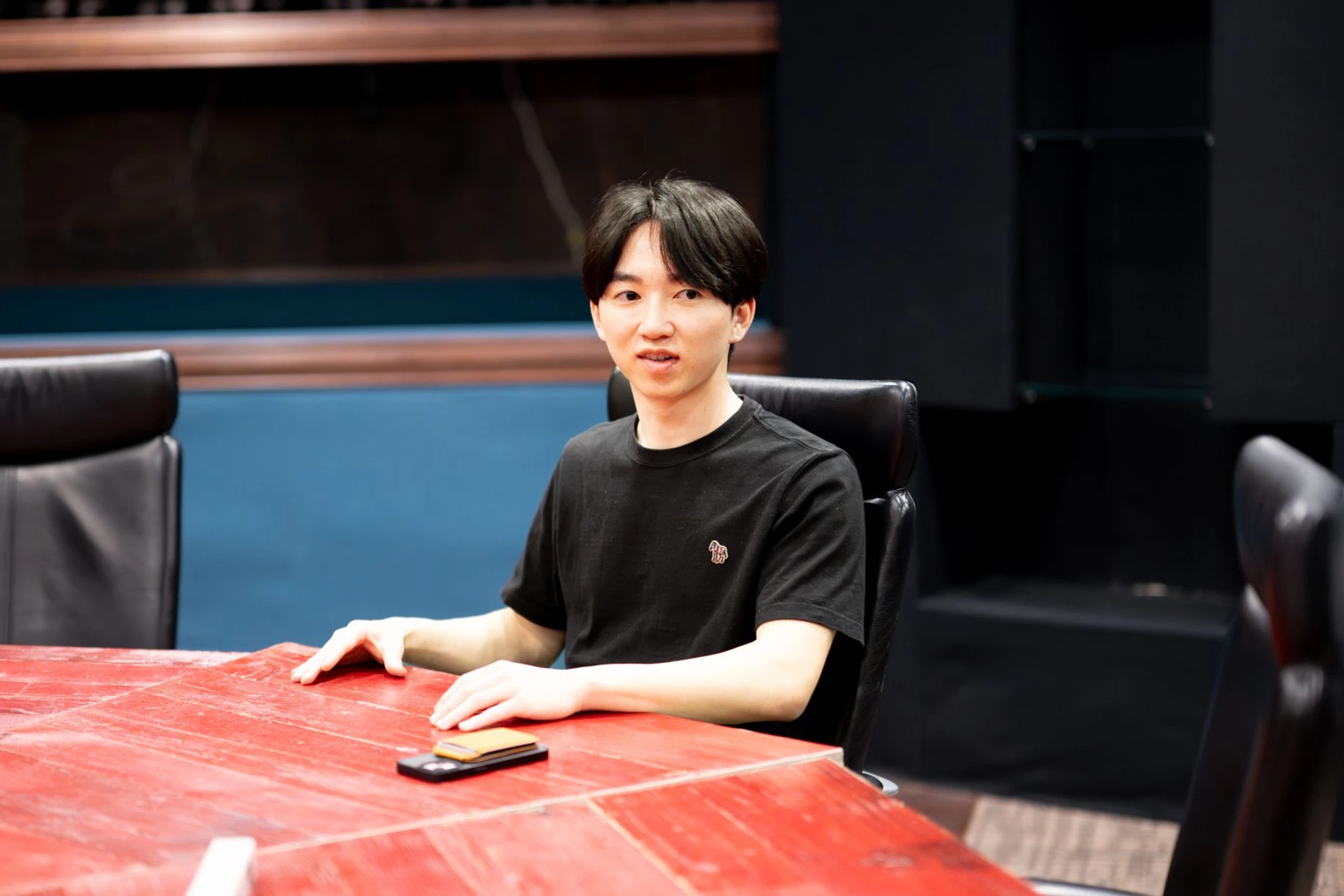

I understand that ReazonChops plans to make the blueprints open source and publicly available in the future.

Open source development is important to the Reazon Human Interaction Laboratory. The robots we brought to TreeHacks and the dual-armed robot we are now developing for the next event are made of materials and parts that are relatively easy to obtain. It’s relatively simple to make plastic exterior parts for the dual-armed robot if you have a 3D printer. In the case of remote control, the size of the controller robot arms on the teleoperator side can be made smaller for easier manipulation.
Of course, if the robot is programmed appropriately, it can be operated automatically as well, like what Team Baymax did for their TreeHacks project. I feel that participating in TreeHacks has further expanded the possibilities of ReazonChops.

As exemplified by the robotic arms, the Reazon Human Interaction Laboratory is conducting R&D with the aim of contributing to society by working in an open source fashion. By participating in events such as TreeHacks, it feels like you are gaining more and more recognition from the world, further empowering this open source model.

Some of the TreeHacks sponsor booths were plain and unadorned, mostly relying on their brand name to attract visitors. Brand-new to Silicon Valley, the Reazon booth attracted the attention of visitors with its diverse display of games, anime, and even a robotic arm system. When we explained to the students that the company uses the profits from its other businesses for open source R&D, many were really intrigued by the company structure and wanted to learn more. I hope that some of these talented students will eventually come to join us, not to mention members of Team Baymax and the 10 others who have already decided to come this summer.

The topic of TreeHacks came up quite a bit during the interviews with applicants for the summer program, and I think we left a pretty good impression with our display. Regardless of the robotic arm, we hope that those who are interested in the Human Interaction Laboratory’s mission and projects will come and join our ranks.
See ReazonChops in action in the below video:
summary
The Reazon Human Interaction Laboratory, with an emphasis on open source development, is open to those who share their values and would like to join their team. Reazon Holdings is a diverse company with a plethora of interesting projects and is gaining brand traction abroad. Reazon and the Human Interaction Laboratory are looking forward to further collaboration with unique talent from Silicon Valley and beyond.
Please feel free to contact us about REAZON’S content, interviews, and press relations.
CONTACTIf you are interested in REAZON HOLDINGS, please check the recruitment site for more information.
RECRUITContributing to society through open-source products The developers' thoughts behind ReazonSpeech v2, an evolved Japanese speech recognition model.

